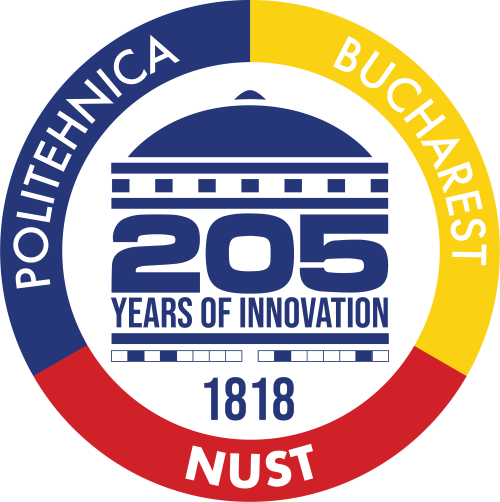Previous Projects
Recent Research Projects (2007 – present)
Natural-language, Voice-controlled Assistive System
for Intelligent Buildings (ANVSIB)
The ANVSIB project was implemented between July 2014 and September 2017 and was funded by the Romanian Government through UEFISCDI, “Partnerships in priority areas” program. The project consortium is formed by three partners: (1) the University Politehnica of Bucharest through the Speech and Dialogue Research Laboratory as Project Coordinator, (2) iWave Solutions, a Romanian IT&C company, as Partner #1 and (3) the Research Institute for Artificial Intelligence “Mihai Drăgănescu” of the Romanian Academy as Partner #2.
The main goal of this project is to create a Natural-language, Voice-controlled Assistive System for Intelligent Buildings. The resulting prototype from this project will be the proof-of-concept starting point for the implementation of voice-enabled assistive systems in homes, schools, hospitals or others. Read more…
Phonetic Analysis of the Romanian Language:
study and software applications (AFLR)
The AFLR project was implemented between October 2014 and September 2017 and was funded by the Romanian Government through UEFISCDI, program “Partnerships in priority areas”. The project consortium is formed by three partners: (1) Softwin Research as Project Coordinator, (2) the University Politehnica of Bucharest through the Speech and Dialogue Research Laboratory as Partner #1 and (3) the Institute of Linguistics “Iorgu Iordan – Al. Rosetti” of the Romanian Academy as Partner #2.
The AFLR project will integrate the results of previous work (existing linguistic knowledge bases, linguistic tools and applications for exploiting linguistic data, etc.) in order to develop various products with scientific and commercial value: (1) Phonetic Study for Romanian Language starting from the already existing linguistic data written in GRAALAN, (2) Romanian Morphological and Phonetic Dictionary, (3) The Phonetic Dictionary of Romanian Syllables, (4) Application of Speech Recognition for Romanian Language.
Automatic Baby-Language Recognition System (SPLANN)
This project was implemented between October 2014 and July 2017 and was funded by the Romanian Government through UEFISCDI, “Partnerships in priority areas” program. The project consortium is formed by three partners: (1) Softwin Research as Project Coordinator, (2) the University Politehnica of Bucharest through the Speech and Dialogue Research Laboratory as Partner #1 and (3) the Emergency Clinical Hospital “Sf. Pantelimon” as Partner #2.
The SPLANN project aims to design and develop an automatic infant crying recognition system, linking neonatal knowledge with signal processing and pattern recognition methods. The goal is to obtain technologies, legally protected by patents, with a high degree of future applicability in health, child care and computer science, with real chances of being successfully exploited on the market.
Noise-robust, domain-adaptable, large-vocabulary
automatic speech recognition system for the Romanian language (LVCSR-ROM)
The project was implemented between October 2013 and June 2014. The LVCSR-ROM project was funded by the Romanian-American Foundation through the Applied Research, Technological Innovation and Entrepreneurship (ARTIE) Fellowship Program. The project proposal ranked first out of more than 150 submitted proposals in the ARTIE Proof of Concept (POC) 2013 Call for Proposals.
The main goal of the LVCSR-ROM project is to develop a Rich Speech Transcription (RST) service for multimedia documents. The final outcome of the project will be a web-service that will enable individuals to access the textual content of a multimedia document (news bulletin, interview, press conference, lecture, meeting recording, etc.) without watching/listening it. This feature is of critical importance in many applications such as multimedia databases indexing and retrieval, real-time radio/TV monitoring, transcription of self-recorded documents, etc. The RST service will be characterized by a) real-time processing, b) high speech recognition accuracy (over 85%) in various noise conditions, c) speaker diarization before speech recognition and d) high transcription intelligibility. Read more…
Spontaneous Speech Recognition for the Romanian Language
in Human-Computer Dialogue Systems
Project manager: Prof. Corneliu Burileanu
This project was implemented between 2007 and 2010 and was funded by the Romanian Government through the National Research Authority (CNCSIS “IDEI” program), owner University Politehnica of Bucharest, ID 930.
One of the key issues in the implementation of applications involving unconstrained spoken language interaction between human and computer consists in the difficulty in adequately interpreting the intentions assumed by the human user. The user voice command interpretation process consists in several stages: speech recognition (stemming to textual transcription of users- utterances), linguistic analysis of this text (resulting in grammatical information attached to the text – parts of speech, syntactic relationships), semantic-pragmatic interpretation of the users- utterance (resulting in a logical representation of the utterance meaning, along with contextual markers – nature and roles of the speakers, dialogue history, etc.). Among these processing stages, the recognition of unconstrained continuous speech came from the user is considered, in most of the existing spoken dialogue systems, as independent of the other processing steps; this leads to a reduced reliability of this component, regarding environmental and contextual variations (i.e. noise, speakers, speaking register). This often entails the erroneous interpretation of the users’ commands or intentions in interacting with the machine. This is why interdependence between speech recognition and semantic-pragmatic analysis begins to be considered, in order to allow dialogue context to react in respect to the recognition output. Thus, this project aimed at designing and implementing of a spontaneous speech recognition engine in Romanian language, suited for human-computer dialogue applications, in that semantic and contextual information is used in speech recognition.
Platform Based on Expressive Speech Synthesis in Romanian Language
for Accessing Text Information on Communication Channels
Project manager: Prof. Dragoș Burileanu
This project was implemented between 2007 and 2010 and was funded by the Romanian Government through the National Research Authority (CNCSIS “IDEI” program), owner University Politehnica of Bucharest, ID 782.
As customer demand for more convenient access to a variety of services in network-based applications increases, speech synthesis technology is becoming more important for service providers. However, in many network-based applications one cannot predict the message that needs to be spoken (e.g., e-mail and SMS, text database records, etc.), and the system must generate sentences from arbitrary text. This task can be accomplished only by text-to-speech (TTS) synthesis systems, which must provide at least a very good intelligibility for the resulting speech to be helpful and accepted by the user.
The research project designed and implemented a telecommunication platform, able to offer services based on speech synthesis in Romanian language, using the current communication networks, mobile (2G, 3G) or fixed. The platform is based on a TTS system in Romanian, a client-server architecture, and on standard communication protocols; the practical implementation uses only open source software products and commercial off-the-shelf (COTS) hardware, in order to minimize production costs. The services have as input information various text sources: e-mails, SMSs, instant messages, or news.
The prototype platform is functionally organized in accordance with the following structure:
- TTS application, realized on a Linux platform;
- HTTP server, closely tied to the TTS system, running on the same platform;
- Media processor, which provides the interface with the phone network through a hardware module; the O.S. used is Linux and the finite state machine which implements the application is realized using Perl programming language.
The platform described above opened up the path to the next step of integrating the TTS with the existing Telecom services in order to create new convergent real-time services. One such new service would be real-time instant messaging with bidirectional voice-text media translation over existing telecommunication networks.
Romanian-English Linguistic Correlations (LINCOR)
This project was implemented between 2007 and 2010 and was funded by the Romanian Government through the National Research Authority (“Parteneriate” program), owner Softwin Group, ID 9869/20.09.2007.
Biometric Signature Secured e-Banking System (SISEB)
This project was implemented between 2007 and 2010 and was funded by the Romanian Government through the National Research Authority (“Parteneriate” program), owner Softwin Group, ID 9841/19.09.2007.
Applications Package for the Romanian Language (PALIROM)
This project was implemented between 2007 and 2009 and was funded by the Romanian Government through the National Research Authority (“Inovare” program), owner Softwin Group, ID 10018/26.09.2007.
Biometric System for the Acquisition and Verification
of Dynamic Signature (BIOACS)
This project was implemented between 2007 and 2009 and was funded by the Romanian Government through the National Research Authority (“Inovare” program), owner Softwin Group, ID 10143/28.09.2007.
Other Research Collaborations
- 2012: research collaboration on Spoken Term Detection and Multimodal Video Classification with lect. Bogdan Ionescu (The Image Processing and Analysis Laboratory – LAPI, Bucharest, Romania).
- 2011-2012: research collaboration on ASR domain adaptation and Statistical Machine Translation (SMT) systems with prof. Laurent Besacier (Laboratoire d’Informatique de Grenoble – LIG, Grenoble, France).


